Rail & Marine
Spacetrain – Spaceframe Structures for Rail
Getting rid of dead weight in public transport.

A modern take on train interior design
The rail industry has been slow to embrace lightweighting at the rate that is now recognised and expected throughout the automotive industry. Made possible by part funding from the Niche Vehicle Network and their Technology Transfer stream, this six-month project set out to demonstrate significant weight savings resulting from the application of lightweight tubular space frames (perfected in low-volume automotive) in the Rail industry.
With project partners Creactive (design and route to market) and Reynolds (supplier of high-strength butted tubing) we quickly identified the rail interiors and — in particular — a new seat support structure as the subject for exploitation.
A typical rail carriage has hundreds of seats. A weight saving of just a few kilograms per seat structure can result in significant weight savings, with equally impressive savings on fuel efficiency and CO2 emissions.

Target Setting
We set out to match or exceed the structural performance of the lightest seat support structure currently being used in the UK, whilst maintaining a cantilevered design and still reducing its weight.
Key performance indicators for these analyses included the stiffness of the seat structure, its strength and natural frequency. Most of the load cases were extracted from the well-known rail standard GMRT2100.
Leveraging Reynolds Technology
Plain gauge tubular spaceframe structures can offer impressive weight savings but, for this project, we wanted to maximise weight savings and took it one step further by making use of butted tubing, for which Reynolds are famous particularly in the world of high-end racing bicycles.
A butted tube is essentially a tube with variable internal diameter. This unique characteristic makes it possible to remove material where it’s not needed, leading to substantial weight savings of up to 45% per tube.
The high-strength steel proposed by Reynolds provided an economical solution for the conservative rail industry. Steel also offers an excellent fatigue performance, also a primary consideration for the train industry.
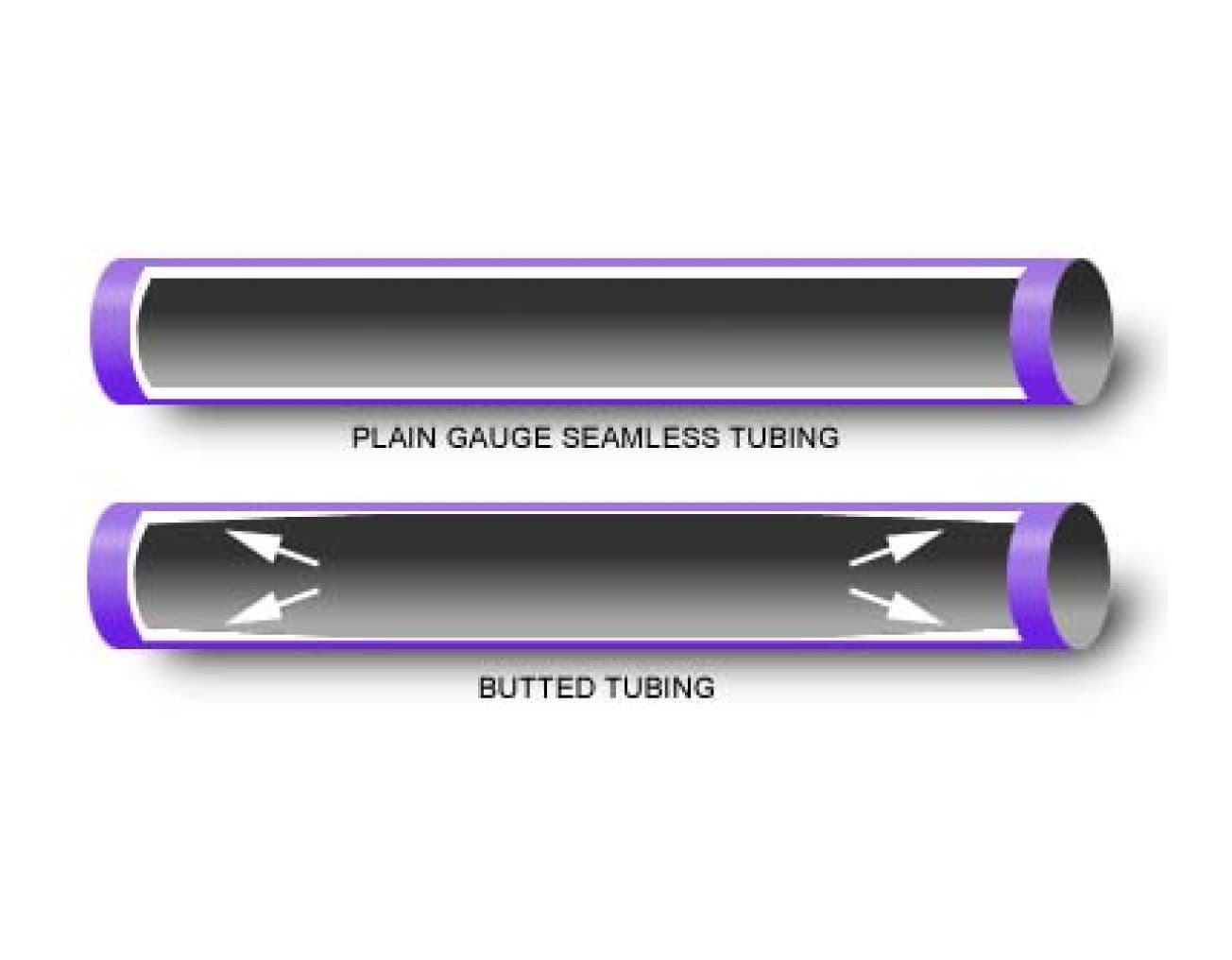
CAE Driven Design
A tight deadline and a requirement for a physical demonstrator required a right first time strategy and the use of a CAE-driven design process. Our CAE team went straight to work with the investigation of various design concepts using relatively simple but fast and accurate beam element models.
This approach allowed us to quickly home in on the most effective and suitable design, giving confidence and time for the development of larger and more detailed models, such as those involving occupant loading.
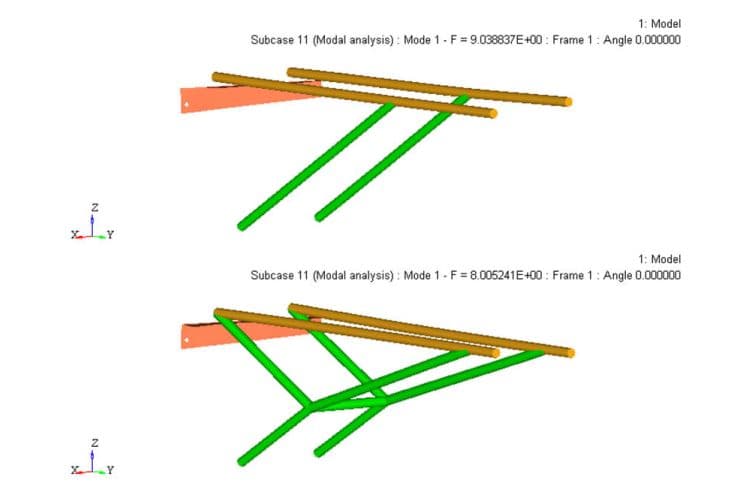
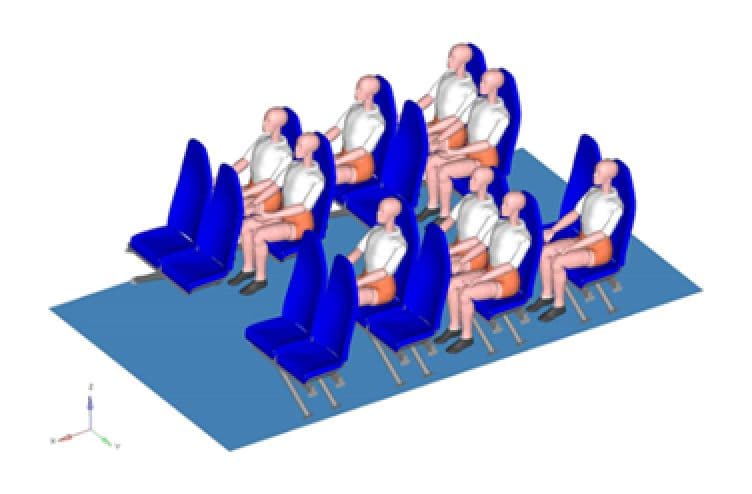
Results
The final design for the seat support structure was the result of over 130 virtual design iterations.
The final design was more than 25% lighter than its closest competitor, while still achieving a competitive price, a superior fatigue life and a higher natural frequency, resulting in better NVH performance.
Implementation of this design over the baseline results in large reductions in CO2 emissions – our calculations give up to 150 tons over the lifetime of a train. That’s enough CO2 to fill the Royal Albert Hall!
Cantilevering of seat structures in rail carriages is a highly desirable and aesthetic design proposition resulting in further advantages including:
- Reduced floor maintenance and cleaning costs;
- Increased legroom.
The project also demonstrated that a non-cantilevered design with high-strength butted tubes can easily match the performance of the existing structure with a weight saving in excess of 30%.
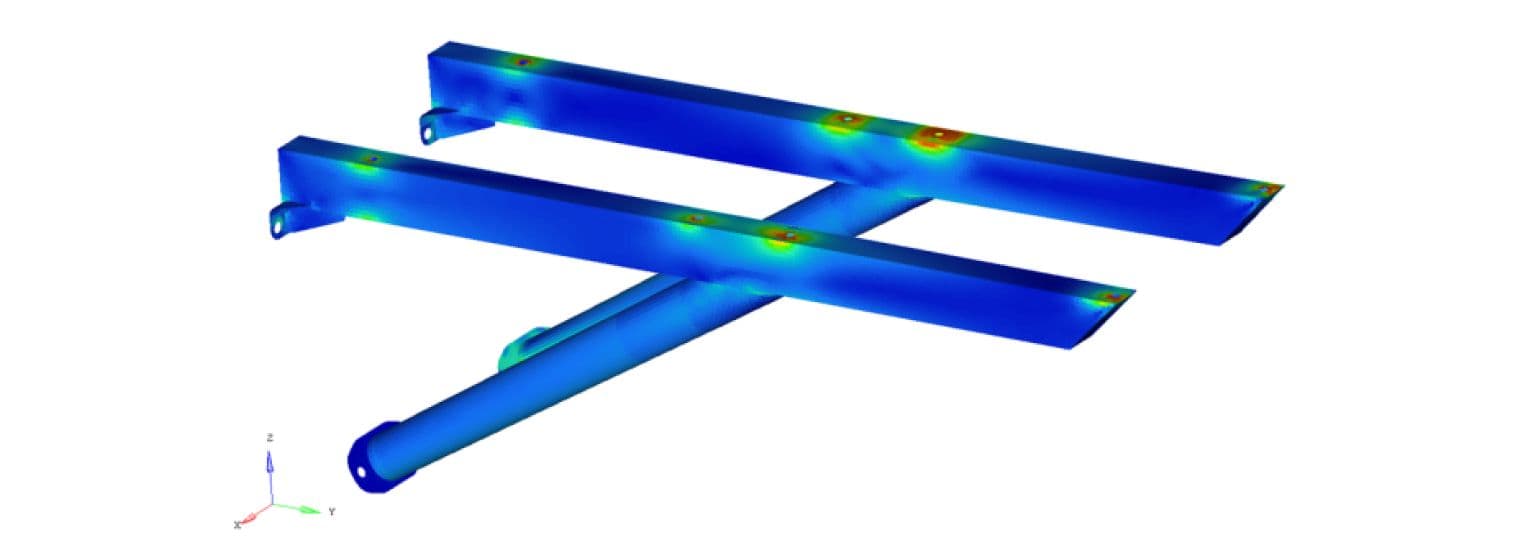


The physical demonstrator
The project partners built a representative physical demonstrator of the SPACETRAIN support structure with carry-over seat and floor mock-up.
The demonstrator was tested and correlated to our numerical model, showing near-perfect accuracy (passenger proof load test).
VR (virtual reality) model
The project partners wanted customers and stakeholders in the rail industry to see how SPACETRAIN would look within a modern train carriage. With the help of the Product Evaluation Group at WMG (University of Warwick), we set about building in CAD and rendering a complete rail interior with SPACETRAIN seating. This resulted in a very realistic virtual reality model that we used in conjunction with the physical demonstrator and our in-house HTC Vive VR headset and tracking system.

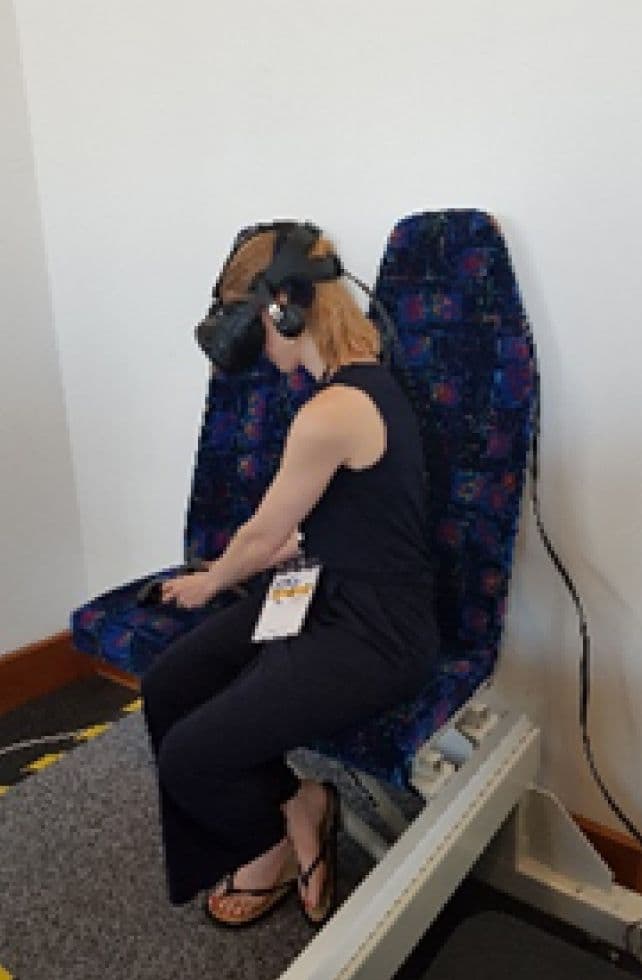
Conclusions
SPACETRAIN successfully transferred lightweight spaceframe technology developed within the UK Niche vehicle industry into the UK rail interiors industry.
Making use of the CAE tools and techniques we were able to rapidly assess a series of design ideas resulting in the delivery of a cantilevered seat support structure at a weight saving of more than 25% of a well-known baseline that is bolted to the floor. The advanced design also delivered superior NVH (improved normal modes) and the high-grade Reynolds butted tubing provided excellent fatigue resistance.
Cantilevering of seats in rail is highly desirable and allows for a cleaner design, extra legroom and better serviceability (access to the floor and cleaning). The reduction in mass per carriage provides significant C02 savings. As the demand for lightweighting in rail grows, SPACETRAIN is an attractive value proposition for new design and existing rolling stock refurbishment projects.
Design summary
| Mass | 4.27kg (excluding shear plates) |
| Weight saving | 25.1% |
| First natural mode | 15.5 Hz |
| Fatigue life | 6x108 cycles |
| Materials | RE725 (tubes), S355 (brackets) |
Get in touch
We would love to hear about your project, get in touch and let’s explore how the expert team at Simpact can take it from design target specification through to verification.